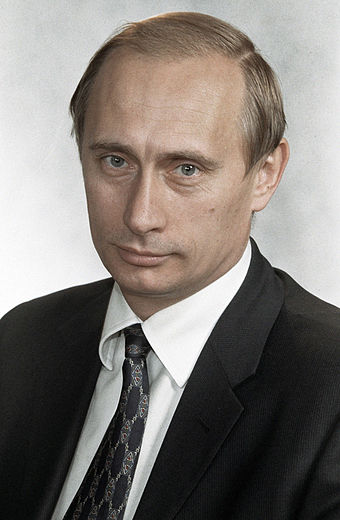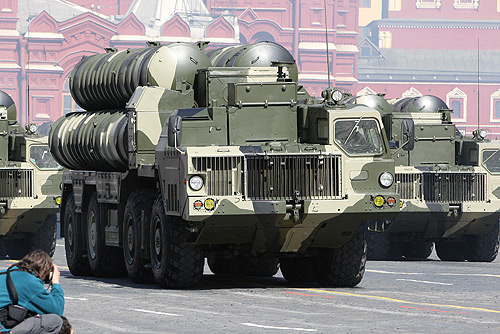Air Combat over Eastern Ukraine
The Crimean crisis has persisted long enough for Russian troops to solidify their gains in the peninsula. The Ukrainian military, meanwhile, has mobilized its own forces—including its reservists—in response. As both sides rattle their sabers, the possibility of war becomes ever greater. The obvious question then arises: just how likely is it that Russian President Putin will launch a further assault into the Russian-speaking parts of Eastern Ukraine?
Many analysts have rightly noted the disproportionate size differential between the Ukrainian and Russian militaries, suggesting that absent NATO support, Ukraine is at Moscow’s mercy. The on-the-ground reality, however, is not so certain. Putin is no fool, and he will evaluate a larger advance in terms of its costs and benefits. Taking Crimea was inherently a low-risk, high-reward operation, as the results of such action show; Russian forces have fully exploited the element of surprise against a distracted Ukrainian government, and Putin has secured his warm-water port in Sevastopol—all without firing a shot.
Taking Eastern Ukraine, for Putin, is another matter entirely. Overcoming Ukrainian defenses will first mean overcoming Ukrainian air defenses, and here the Russians come up against a familiar face: Ukraine operates many of the same air defense systems that Russia does. These systems were forged in the hostilities of the Cold War and were thus designed to counter NATO fighter jets; in fact, the US has spent billions on cruise missiles and electronic warfare aircraft to counter these very systems. In other words, this fight will not be one that the Russian Air Force can win easily, as many analysts have claimed.
The Ukrainians are without doubt facing significant challenges in their defense against the Russian invaders. According to IHS Jane’s World Armies, the Russian troops in Crimea number 31,000 and include both transport and attack helicopters, airlift aircraft, and S-300 surface-to-air missiles (more commonly known as SAMs). The S-300s are very effective air defense systems that will make Ukrainian air strikes against Russian forces highly dangerous affairs, to say nothing of the fact that they will likely rule out any offensive air operations by the Ukrainians.
Aside from the Russians' very capable air defense system, the Ukrainian Air Force struggles with a host of internal issues, most notably a lack of adequate weaponry or training for its troops. While Ukraine did, according to IISS’s The Military Balance 2014, operate some 90 Mig-29 Fulcrums and 36 Su-27 Flankers (both Soviet-era fighter jets),the Crimean invasion has disabled many of these aircraft—hampering the strength of their defensive forces. Further, Ukraine's failure to modernize its air fleet has left serious questions to be answered regarding their remaining planes' abilities to operate effectively. Lacking any chance offensively, Ukraine’s small and underfunded air force will likely be fully committed to the defense of its air space.
Russia, meanwhile, has both a larger, more modern, and better-maintained air force. According to The Military Balance 2014, its Southern Military District has roughly 63 Mig-29 Fulcrums and 58 Su-27 Flankers—putting this one region alone about on par with Ukraine’s entire Air Force. When you add in Russia’s Western Military District, which has 18 Su-33 Flanker Ds, 20 Mig-29 Fulcrums, 51 Mig-31 Foxhounds, and 109 Su-27 Flankers, it bests Ukraine by a roughly 3:1 margin.
Russia also flies airborne early warning and control (AEW&C) aircraft (essentially jumbo jets with radar dishes and command and control equipment) that can push its radar detection range out much further than land-based radar systems, whose detection ranges are limited by the curvature of the earth.
Critically, Ukraine has no such aircraft, so Ukrainian fighters will have to rely on their own radars or on ground-based radar to feed information to them. Even with these tools, however, the Russian aircraft will outmatch the Ukrainian planes both in number and in quality—while being flown by better-trained pilots.
However, Russian forces also face their own disadvantages. In particular, Russia has failed in the past to suppress enemy air defense systems, an essential task for any effective air campaign. For example, the 2008 Russo-Georgian war demonstrated particular failures in the Russian military’s ability to conduct SEAD (suppression of enemy air defense) missions.
At the time, Russian commanders on the ground relied on outdated and obsolete equipment that left them unable to communicate with each other or with their space-based intelligence. This prevented them from utilizing their superior intelligence, surveillance, and reconnaissance (ISR) assets to pinpoint Georgian troop concentrations. The Russian air force, lacking night fighting capability, couldn't even attempt to run SEAD missions 24 hours a day.
Further complicating this already complex picture is the fact that Russia possesses no operational stealth aircraft, meaning its most effective tool to run SEAD missions is the so-called 'wild weasel mission', which sends strike aircraft armed with anti-radiation missiles into enemy airspace in order to bait enemy radars. If these radars lock on, the 'wild weasel' aircraft can then fire their own missiles at the radar installation (before a SAM locks on to it, ideally). While these missions may sound effective in theory, in practice, they are anything but: their unofficial motto among US forces is, “you gotta be shitting me,” a reference to the natural reaction of a soldier being told “to fly back seat to a self-absorbed fighter pilot, while acting as flypaper for enemy SAMs.”
Ukraine operates its own S-300s, posing perhaps the greatest impediment to a Russian air campaign. Commercial satellite imagery shows that Ukraine possesses many of these systems, what IHS Jane’s contributor Sean O’Connor calls , “the most capable SAM network in Europe outside of Russia.” Compared to Georgia, Ukrainian air defenses are more numerous and farther apart. The latter qualification can be a double edged sword: air defenses that are spread farther apart will have coverage gaps that could be exploited by wild weasel aircraft. O’Connor’s analysis shows, however, that while early warning radar coverage is more concentrated on the borders facing NATO and the coast, there is plenty of overlap between radars to cover all of Ukraine.
Since radars are stationary targets, another option Russia has is to take out them out with its conventionally armed ballistic missiles. Russia has roughly 200 SS-21 Scarabs, but even the long-range 'B' variant has a range of only 120 km. (For reference, Ukraine is roughly 1200 km wide, and, on average, 400 km from north to south.) Even firing from the closest edge of the border, their missiles will not be able to hit Kiev.
An improved missile currently replacing the Scarab is the SS-26 Iskander, however it was introduced recently; Russia only possesses about 28 of the missiles as of June 2013. With a range of 400 km, it can target almost all of Ukraine, save the most western part. O’Connor’s analysis, however, identified a total of 93 radar sites and 29 S-300 sites. Given that some of these sites are in Western Ukraine, Russia would realistically only need to destroy 50-75% of these sites to gain air dominance in its presumed area of operation—Eastern Ukraine.
Even with these reduced standards, Russia does not have enough missiles. As a result, if Russia wants air dominance, it will have to conduct SEAD operations with its own aircraft on the remaining sites. Ballistic missiles, relying on satellite image-based intelligence will also be of little use against road-mobile Ukrainian SAMs or radars as long as they are moving.
This brings us back to the central question: can Russia destroy Ukrainian air defenses?
To its credit, the Russian Air Force has learned from its performance six years ago. It has increased funding for new and better navigation satellites and modernized its anti-radiation missiles. Likely, they have also spent some time training their pilots to fly SEAD missions. Six years, however, is simply not enough time to overhaul SEAD capabilities, especially given the inherent difficulty of this type of mission (the US, with its robust SEAD capabilities, has too had its struggles performing 'You-gotta-be-shittin-mes'). Given Russia’s capabilities, and assuming competent Ukrainian SAM crews, an air war over Ukraine would likely resemble NATO’s struggle over Serbia in the mid to late '90s.
More than likely, many Russian aircraft will have to be dedicated solely to SAM hunting, reducing the effectiveness of its air strikes. Assuming the Ukrainian air defense forces operate their SAMs at least as well as the Serbians, the risk to Russian aircraft will be very high. Even the poorly trained Georgians were able to give the Russian air force a bloody nose, so Russian strategic planners will not be likely to take the Ukrainian threat lightly.
The increased risk and resources inherent in an air campaign over Ukraine are far higher from what Russia has so far committed to the Crimean crisis. Russian forces have remained in the Crimean peninsula and the situation seems to have tentatively stabilized. For now, Moscow has made no moves toward expanding its gains, and this hesitation likely indicates that the costs and risks of an air war against the Ukrainian military—as part of larger land operation or not—outweigh the benefits. Moscow’s strategic calculus will change if the status quo changes, which could happen if the Ukrainian military can successfully launch an offensive into Crimea that threatens Russian control of Sevastopol. In such circumstances, Moscow will be more amenable to a larger escalation, one that includes airstrikes, but this scenario remains unlikely for the time being.


